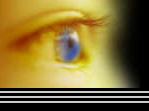|
For encounters of a different kind, venture
east and cross the bridge from the town of Nassau to "Paradise," with resorts, casinos and exciting nightlife on an island
formerly called "Hog."
Its transformation is not unlike
Cinderella's putting on the glass slipper. For years the island stood completely undeveloped, its beaches and tropical
splendor unnoticed by the world. Suddenly, with the addition of luxurious hotels and a sparkling casino, it was transformed
into one of the most glamorous and celebrated resort centers in the world, to see what it has been missing.
For those who prefer a quieter, more serene
Nassau/Paradise Island, it can be found farther west. Indeed, once you leave Nassau, the pace is slower.
For example, the section of West Bay Street
that leads to Cable Beach is nicknamed "Go Slow Bend."
Beyond Cable Beach, the island is transformed. Large
tracts of pine trees and rolling hills dominate the central portions of Nassau/Paradise Island, and the island's perimeter
is marked by miles of fine white sand beach.
The Coral Harbour development is a
quiet, opulent community in a palm-clad setting. Its winding canals offer easy access to the sea.
West of Coral Harbour, there is Adelaide,
a tiny village with narrow streets. It was one of the first Black settlements combining exclusive tranquillity and lots
of action. Reclusive millionaire Howard Hughes and the former Shah of Iran are among those who have found refuge here.
As you go east, just past the bridge
to Paradise Island, there is the boating heart of Nassau/Paradise Island with a number of marinas and boats for hire.
The East End is also a delightful residential
area showing the full flavour of the colonial past in its architecture and horticulture. Big houses with wide breezy
verandas face the sea.
Cable Beach, with its luxury hotels,
casinos and beachfront, got its name in 1907 from the laying here of transatlantic telephone cables linking what was an isolated
Bahamas to the rest of the world. But these days, the world comes to The Bahamas established after the abolition of
slavery. The area is a lovely, secluded spot for fishing and swimming.
At the tip of the island, there is Lyford
Cay, an exclusive residential enclave. After golfing or tennis or swimming, why not try some of the native cuisine
of The Bahamas: Conch fritters, grouper fingers, peas 'n' rice, boiled fish, johnnycake and guava duff are just a few of the
tasty dishes, all of which go just right with a tropical drink in your hand.
|

